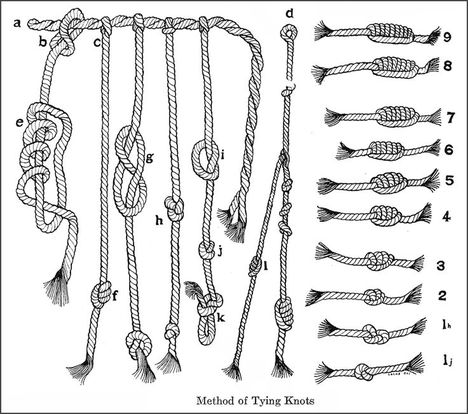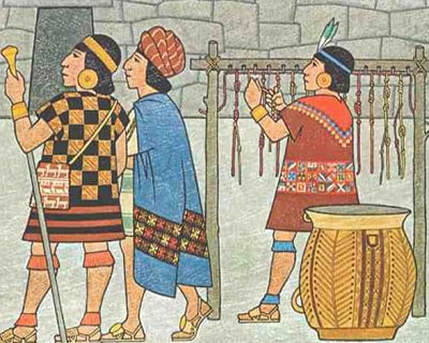Inca Science, Innovation & Technology Activity
Mathemagical
Quipu means ‘knot’ in the language of the Inca. The quipu is a series of colored, knotted strings of wool, each tied to a main string. The type of knot, the placement of the knot, and the color of the string each had meaning to the Inca. Not many people could understand this meaning. Those who could were called ‘rememberers.’ Although, the Inca did not have a written language, by using quipus they were able to keep detailed records of all sorts of things across the empire. Historians believe this record system was based on the number 10: 10, 100, 1000, and so on. Inca officials used quipus to record the wealth of the empire - how much gold, how much silver, how many people were in a farming community for tax purposes, etc.

Some historians believe the quipus were also used to send other messages. What those messages might have been is unknown. Even so, it seems to me that the quipu could be adapted to send messages. After all, the quipu is really just a number-based system of coding information. Hmmmm, sound familiar? Binary computer coding is just a sequence of 1s and 0s. You can do an awful lot with numbers. You might even say it is mathemagical.
Today, you’re going to make a quipu. You will need some colored string or yarn. The type of string you use to make friendship bracelets would be perfect.
Today, you’re going to make a quipu. You will need some colored string or yarn. The type of string you use to make friendship bracelets would be perfect.

Steps to Success: You are going to construct your quipu in order to tell a story.
- You will tell your story using colored string and knots.
- So that your story can be "read," you will need to assign meaning to the different colors that you use in your quipu. By braiding two colors (or more) together, you can create a nearly infinite number of meanings.
- Numbers of knots are numbers, but think of all of the types of information that we share by using numbers - distance, size, weight, time, age, price, dates. An RGB chart even uses numbers to identify colors.
- Write a short story about something from your own life.
- Then, use your quipu to re-tell your story in colors and knots.
- Prepare to share your story with the class.

